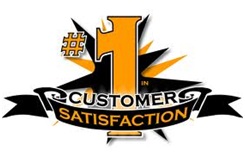|
 |
|
 |
Corporate culture
Corporate culture is... An organization’s values and beliefs shared by all its employees. Marvin Bower, an American management consultant, called it “the way we do things around here”.
How to have a great corporate culture 1. Decide on your values and beliefs
The values of successful organizations usually are
As in the values statement (credo) of the American pharmaceutical company, Johnson and Johnson, profits are mentioned last because they automatically result from doing everything else brilliantly!
2. Communication and persuasion (or coercion, if necessary) Values must be clearly communicated to all employees who must be motivated to put them into action (see point 3). Alternatively they must be forced to do so through indoctrination (persistently imposing
organizational values on them, reinforced by implicit punishment for non-compliance). A short statement of the organization’s mission (or purpose) can also concentrate employees’ minds on what’s important. For example, the aim of Walt Disney (pictured right) was “to bring happiness to the millions”.
3. Motivation Every employee must do everything possible to put the organization’s values into action, particularly customer satisfaction – how?
a) leadership Bosses and managers must lead by example and live by the values.
b) ethics Employees mustn’t be forced to act against their consciences.
c) pride (in what the organization is doing e.g. charities).
(for putting the values into action e.g. more money).
e) recruitment Hire people who have the right values and attitudes.
f) training and education (to change people’s attitudes and reinforce the values).
4. Be patient It takes time to create a customer first culture, requiring:
5. Change and continuity The right values are everlasting and provide continuity with the past. But they must also encourage change, innovation and continuous improvement. The danger is that strongly held beliefs (i.e. a strong culture) can reinforce old ways of thinking and create resistance to change. Groupthink can also be a problem, when people go along with what the organization thinks, even when they know it’s wrong.
Key quotes explained
Action without philosophy is a lethal weapon; philosophy without action is worthless, Soichiro Honda, co-founder of Honda (pictured right).
To be successful an organization must have values and beliefs (from philosophy) and then put them into action, whilst continually adapting to new circumstances. “Open your arms to change, but don’t let go of your values”, advises the Tibetan spiritual leader, the Dalai Lama.
Our strength is our unity of purpose - Franklin D. Roosevelt (FDR, American president, pictured right). An organization is strongest when its people work together for the same purpose. “A house divided against itself cannot stand”, the American president, Abraham Lincoln, said, reiterating Jesus in Mark’s gospel.
Great companies make meaning - Richard Pascale (pictured right) and Anthony Athos (pictured right below) in their book, The Art of Japanese Management).
The best organizations convince their employees that customer satisfaction and innovation are the right things
to do. The American president, Woodrow Wilson, said that “devotion to right” is the only thing that can unify people.
The ones I’m talking about belong to it [the organization] William H. Whyte (pictured right, talking about what he called the organization man) Corporate cultures can be so strong that people don’t just work, they are their work.
Medicine is for the people, not for the profits George W. Merck , son of the founder of American pharmaceutical company, Merck, pictured right) People are inspired by values that touch their hearts, not money.
Best books
Thomas (Tom) Peters (pictured right) and Robert Waterman (pictured right below), In Search of Excellence (1982) The best companies have the right values (based on excellent customer service) and put them into
action.
Jim Collins (pictured right) and Jerry Porras (pictured right below), Built to Last (1995) The best companies have:
(For more detail see Built to Last in the Business Books section)
Rob Goffee
and Gareth Jones, The Character of a Corporation
(1998) - pictured right with Goffee on the left. A successful culture has: • sociability - friendliness between employees. • solidarity - employees achieving shared objectives quickly and well.
Craig Hickman (pictured
right) and Michael Silva , Creating Excellence (1985) The 3 C’s of a successful culture are:
Terrence Deal (pictured right) and Allen Kennedy (pictured right below), Corporate Cultures (1982) A strong culture (with strongly held values) is vital to success but can have problems:
Edgar Schein (pictured right), Organizational Culture and Leadership (1992) Corporate cultures are successful because of brainwashing (“coercive persuasion”). People are forced to believe in the right values like customer satisfaction. This takes time (25 years at the American company, Procter and Gamble).
Emile Durkheim (pictured right), Suicide (1897) Societies and groups (like organizations) are bound together by shared moral values (without which there would be “anomie” i.e. purposeless disorder and despair).
Charles Handy (pictured right) , The Gods of Management (1985) There are four main types of culture, named after Greek gods: 1. Club (Zeus) Concentration of power in one or two people with autocratic but sometimes caring (or paternalistic) management (e.g. the armed forces and small businesses). This has the advantage of quick decisions at low cost.
2. Role (Apollo) Hierarchical (power from position) and bureaucratic (sticking to procedure) e.g. civil service. This is good when things are stable but bad for rapid change.
3. Task (Athena) Teams (from different departments) given particular jobs to do – excellent for innovation and change.
4. Existential (Dionysus) People work as individuals with lots of autonomy e.g. doctors and teachers – good for developing individual talent.
Most large organizations have a mixture of all four, because different jobs need a different culture. For more detail see Gods of Management in the Business Books section. |
|
|
||
|
|
|
||
|
||
| Copyright © wisdomtowin.com All Rights Reserved | ||
|
















jones-80.jpg)






